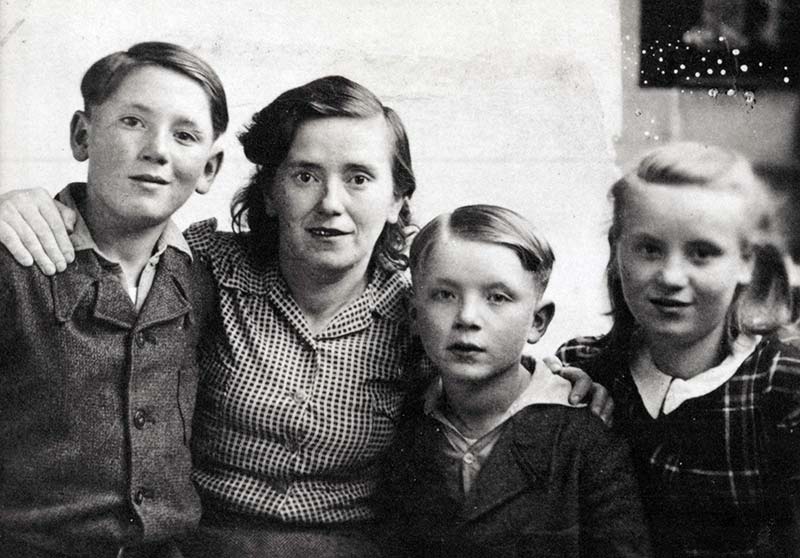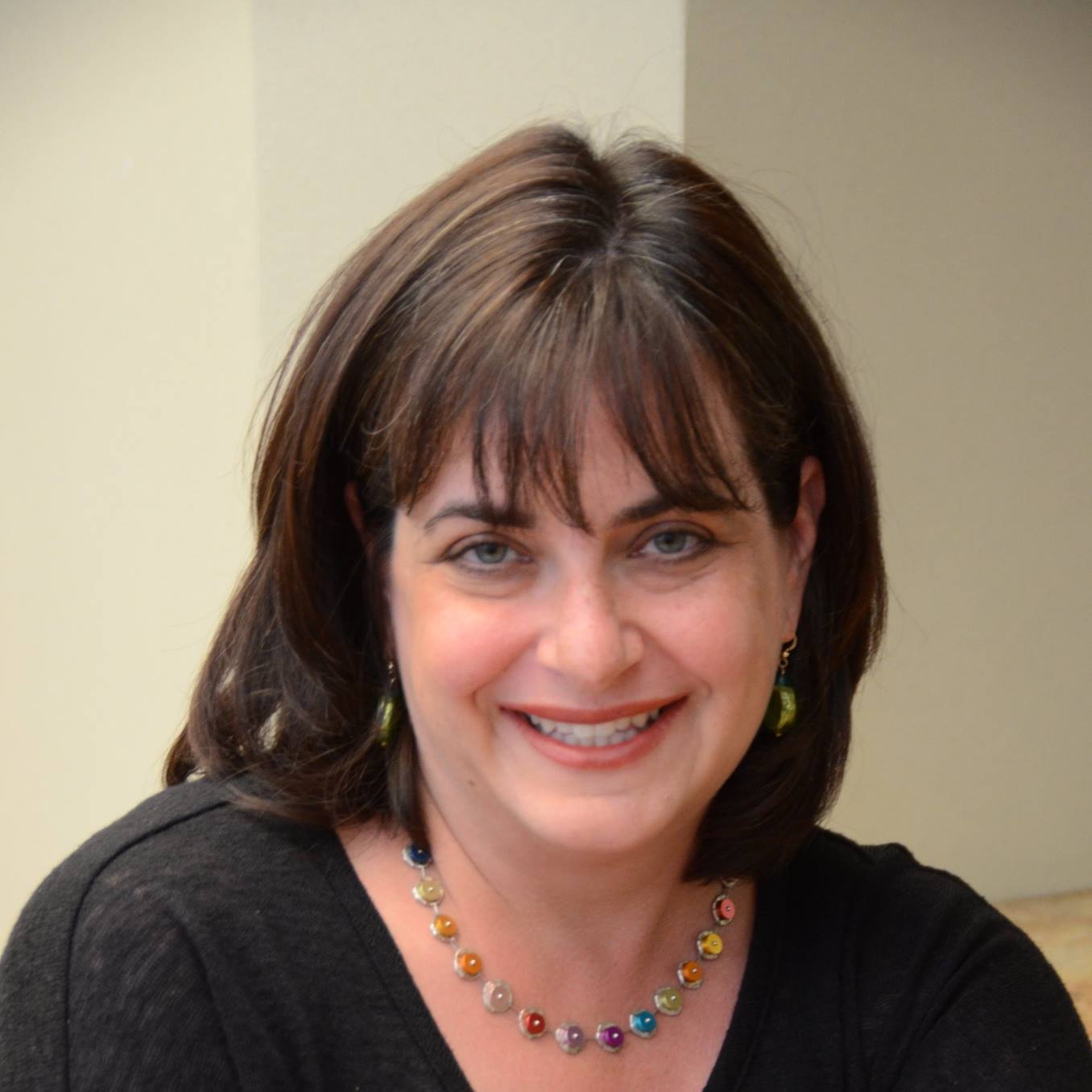Nearly 80 Years After The Holocaust, A Survivor Tells His Story

Gerald Szames is 2, maybe 3 years old. He is standing at the foot of the bed, looking at his mother. She is sick, propped up on a pile of pillows.
He has other flashes of memories of life before the Nazis invaded his Polish shtetl of Trochenbrod in 1941, when he was four years old – his grandfather taking him to the mill, his father lifting him up to give him a candy and a kiss.
After that, the images are all too vivid: dogs lunging from leashes held by German soldiers armed with rifles; hiding in an oven with his mother and brother in the Trochenbrod ghetto. And he will never forget living in pits in the forest – the family called them “graves” —for more than two years with his older brother and sister, two young cousins, and five adult family members.
But until a few months ago, Gerald, a retired pharmacist living in San Diego, never talked much about those years.
He worried that his memories differed from other family members’ accounts. His story also conjured painful episodes: His uncle and his grandfather, in separate attempts to silence his cries while they hid in the forest, tried to kill him.
But mostly Gerald was hesitant to tell his story because he chokes up whenever he speaks of his mother, his guardian and protector, who herself suffered but survived.
Then, in October 2022, Gerald’s daughter, Deborah Walsh, asked if he would agree to record an interview for the Holocaust Survivor Testimony Initiative, USC Shoah Foundation’s urgent effort to record the last living Holocaust survivors. In the past few years, Deborah had managed to piece together enough of her father’s story to share it—with Gerald in attendance—at schools, business, and community groups. But she wanted to hear his story in his words.
Last December, Gerald recorded his testimony at the new Ceci Chan and Lila Sorkin Memory Studio at USC Shoah Foundation, a state-of-the-art video recording facility that looks and feels like a living room. Gerald spoke for more than five hours.
“Most of the time [my daughter] Debbie tells my story, because I have certain points where I start to cry, and I can’t go on,” Gerald said. “But this setting was very comfortable for me.”
Giving Survivors The Last Word
Crispin Brooks, curator for USC Shoah Foundation’s Visual History Archive and author of the Institute’s interviewer training guide, conducted the interview with Gerald.
“My sense was I had to ask very few questions. Gerald got started, and he just talked. He was just ready to tell his story,” Brooks said.
Brooks is part of the team recording oral histories in the Memory Studio in Los Angeles and across the country. Some in-home interviews are also being scheduled.
These newly recorded testimonies will be indexed and preserved in the Visual History Archive, along with the testimonies of 52,000 witnesses and survivors of the Holocaust, most of them recorded in the 1990s. The testimonies are used in educational materials, films, and other resources accessed by 35 million people annually.
The survivors recording testimonies today are in their 80s and 90s and were children during the war.
“We have an ethical obligation to record the testimony of every survivor who wants to be interviewed, of whatever age or experience, simply because they should be given a chance to tell their stories and to have their experiences become part of the historical record,” Brooks said. “It feels sort of like emotional justice to give the survivors the last word. They get to name the people whose names would otherwise be forgotten. They get to preserve the towns and shtetls that are no more.”
Gerald’s hometown of Trochenbrod, also known as Sofievka, now in Ukraine, was unique in that it was an exclusively Jewish shtetl. On Yom Kippur in 1942, Nazis and Ukrainian collaborators rounded up and executed everyone left in Trochenbrod. The town no longer exists.
Hiding and Running
Gerald, who was called Jankiel Leib when he was born in 1937, was around 2 years old when Soviet troops occupied Trochenbrod in September 1939. The Communist government took over all the businesses, including Gerald’s father’s shop.
When German troops invaded Trochenbrod in June 1941, the retreating Russians sent all the able-bodied men to the front, including Gerald’s uncle, David Katz, and his father, Shloima Szames. They never came back.
Executions began almost immediately, and the ghetto was established soon after. Nightly raids, conducted by German and Ukrainian guards, terrorized the ghetto. Each night, Gerald’s mother, Taibel, found places to hide: She brought Gerald’s sister and brother to a secret cellar where leather was cured. His sister, Fay, then 7, hid between two barrels while his brother, Irv, 6, had to balance himself over a barrel of lye.
Taibel and 4-year-old Gerald hid in a wood-burning oven, where they managed to evade a soldier – despite Gerald’s loud crying for water. Another night, when they were discovered in the oven, they were lined up for execution. Gerald’s mother begged for the life of her family and paid off a soldier with gold she had hidden in her underwear.
Eventually, Taibel got word: Run to the forest. The family is there.
Living in Graves
Taibel gathered her three children and managed to find her father, Pinchus Katz, in the forest, along with her brothers and other family members.
With a spade, an axe, and a knife, Pinchus and his sons dug pits big enough for all ten family members. They covered the “graves” with logs and moss and would stay there for two weeks, then move on and dig a new trench.
Gerald’s older brother, grandfather, and uncles went on forays to trade or steal food – most often pig slop. Gerald remembers eating blueberries off a bush and feasting on a pig after a bomb hit a nearby farm. They dug wells for water.
On Yom Kippur in 1942, Pinchus returned to their grave at night in tears, saying, “They’re all dead. They’re all dead.” Everyone in the Trochenbrod ghetto had been killed.
In the graves, Gerald and his cousins passed the time picking lice from each other's hair and bodies and squishing blood-filled mosquitoes. Gerald’s uncle kept the vermin in a pouch he said he was saving for Hitler. In the summer, Gerald played with fireflies. In the winter, they bailed out rainwater and snow and huddled to keep warm.
But Gerald's family lost patience with his frequent tears and his wails. One day, his grandfather removed the rope that was holding up his pants and used it to hang Gerald from a tree. His mother cut him down. Another time, his uncle kicked him into a well. Gerald grabbed onto a tree root, and his mother pulled him out.
Gerald’s mother convinced the family that Gerald was a lucky child – she had evaded capture while hiding with him in the oven, despite his cries. If they let him be, she told them, they would all survive.
In 1944, Pinchus went to investigate a German plane that had been shot out of the sky. A Russian soldier told him the Germans were retreating. A few months later the area was liberated by the Russians, and in late summer 1944 the family left their hiding place. All ten had managed to stay alive, the only survivors of their extended family.
His Whole Story
They moved to Russia and Poland and eventually to displaced persons camps in Germany. Samuel Katz, Pinchus’ brother, sponsored the family to move to the United States. In 1947, Gerald arrived in New York with his mother and her husband, Boroch Bernstein, whom she had married in a DP camp. They settled in Columbus, Ohio, and two years later were joined by Gerald’s siblings, Fay and Irv, who had been among a group of orphans on The Exodus, the famed ship turned back from the shores of Palestine in 1947.
Gerald graduated high school in 1955, and then earned a bachelor’s degree in biology at Ohio State University, followed by a degree in pharmacy. In 1959 he and Eva Bekes, a Hungarian Holocaust survivor, were married. They had three daughters, Suzanne, Deborah, and Michelle.
While Gerald recorded his testimony last December, Deborah sat in the adjoining room watching a live video feed. It was the first time she had heard her father tell his entire story in his own words.
“It’s so important that his story will be there for my children and for their children, and for the world,” Deborah said. “Every story is important.”
USC Shoah Foundation is interviewing survivors and witnesses of the Holocaust at the Ceci Chan and Lila Sorkin Memory Studio at USC and across the country. Learn more or apply here.
Like this article? Get our e-newsletter.
Be the first to learn about new articles and personal stories like the one you've just read.
